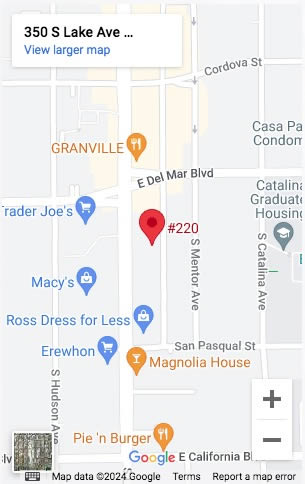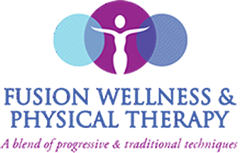Meet Our Team
About Heather Jeffcoat, DPT | Los Angeles Pelvic Floor Doctor

Meet Jiaer/Clara, DPT


Heather and her staff blog about all things pelvic health related
Including male, female, pediatric, transgender and nonbinary chronic pelvic pain, urinary dysfunction such as incontinence, prostatitis, sexual dysfunction, pregnancy, back pain, upcoming events and more.
- Details
- Staff Writer
- 2532
Best Exercise for Each Decade of Life: Exercises to Benefit Aging
Here at Fusion Wellness PT, we believe fitness is something to practice throughout a lifetime. It will look different for everyone, and the type of movements performed may be different for each decade. The things you do to stay active may even change in a month's time. Variability is important to keep the body versatile, and to keep you challenged. Perhaps someone was a track athlete in high school, then got involved in the yoga class on college campus in their 20s, in their 30s they picked up group fitness cycling, in their 40s they spent time hiking, and in their 50s and 60s they enjoyed yard work, gardening, and outdoor biking to stay active.
- Details
- Staff Writer
- 3525
There is growing research for the role of pelvic floor physical therapy in treating male sexual dysfunction. Dysfunction can occur in any phase of the sexual response cycle, including: erectile dysfunction, premature ejaculation, and orgasmic disorders. Many people live with sexual dysfunction and in this article we will exhibit how exercise helps sexual dysfunction.
A 2020 study found that, almost 1 in every 3 men (up to 31%) have sexual dysfunction.1 Another research article shows that erectile dysfunction (ED) is on the rise over recent years.2 Despite the large numbers, many people put off seeking assistance for these serious quality of life problems due to the sensitive nature and potential humiliation of asking a healthcare practitioner what can be done. Even though there are many prescription drugs that can alleviate symptoms temporarily, there is little focus on the causes of make sexual dysfunction and even less on lifestyle changes that might also alleviate symptoms. Erectile dysfunction is an arterial level problem, so it is no surprise that the most prevalent comorbidity of erectile dysfunction is cardiovascular disease. Are you thinking what I’m thinking?
- Details
- Kasia Gondek, PT, DPT, CSCS
- 12117
Male Dysorgasmia is on the Rise
In our practice, we see many males who come in describing recent or long-term pain with orgasm or after orgasm (called dysorgasmia). It is not uncommon for a patient to come in feeling discouraged or hopeless due to their pain or sexual dysfunction. Sometimes their medical providers may have prescribed pain medication or antibiotics, or others simply don’t have a solution. But there is hope and we are here to help!
This blog covers some of the main medical or post-surgical conditions that can contribute to male dysorgasmia, followed by the benefits of pelvic floor rehabilitation or pelvic floor physical therapy to improve pain and sexual functioning.
- Details
- Sarah Bellon, DPT
- 223
Physical therapy for trans individuals is an emerging and essential field, and at Fusion Wellness Physical Therapy, we are committed to providing support and care tailored to your needs. This article explores how our physical therapists can assist with various diagnoses that trans men, nonbinary folks, and transmasculine individuals may face, from general orthopedic concerns to specialized pelvic health issues.
Post-Top Surgery Rehabilitation
Top surgery is a common procedure for trans men and some nonbinary individuals with excess chest tissue. Following surgery, arm movement is restricted to ensure proper healing of scars, which can sometimes lead to decreased arm strength or limited shoulder mobility. Physical therapy offers a path to restore strength and flexibility, empowering you to engage fully in activities you enjoy. Our therapists can also help manage post-surgical swelling through specific exercises and manual lymphatic drainage techniques.
Support After Bottom Surgery
Our physical therapists are equipped to support recovery from various surgeries. For bottom surgeries like hysterectomy, metoidioplasty, and phalloplasty, we develop tailored rehabilitation plans focusing on the hips, core muscles, and donor site care in the case of phalloplasty. These plans aim to enhance quality of life and reduce pain.
Pregnancy and Postpartum Care
Pelvic floor physical therapy is invaluable for trans men and nonbinary people during pregnancy. Affirming care throughout this process ensures everyone receives the support they deserve. Our physical therapists assist with managing back pain, pelvic pain, and pelvic floor dysfunction during pregnancy, ensuring safe movement and aiding postpartum recovery.
Addressing Pain and Discomfort
Some trans men and nonbinary individuals may experience pain during sex or general discomfort in their genital area. Our pelvic floor therapists are adept at managing such pain, whether it arises from pre-existing conditions, hormone therapy, surgery, or musculoskeletal causes. We work to identify and address the root causes of discomfort.
Comprehensive Wellness Programs
Beyond surgical recovery, physical therapists at Fusion Wellness support trans individuals in managing stress, chronic pain, and creating personalized fitness programs aimed at body reshaping. Our goal is to provide holistic care that meets your unique needs.
A Safe and Affirming Environment
Accessing healthcare can be challenging due to negative experiences in the past. At Fusion Wellness Physical Therapy, we prioritize providing a safe, affirming space for all individuals. Our gender-affirming care is designed to ensure you receive the compassionate support you deserve.
Take the next step towards better health and well-being. Schedule an appointment with our understanding and skilled physical therapists in Beverly Hills, CA, today. At Fusion Wellness, we are here to support you every step of the way.
References:
James, S. E., Herman, J. L., Rankin, S., Keisling, M., Mottet, L., & Anafi, M. (2016). The Report of the 2015 U.S. Transgender Survey. Washington, DC: National Center for Transgender Equality.
Moulder, J.K., Carrillo, J. & Carey, E.T. Pelvic Pain in the Transgender Man. Curr Obstet Gynecol Rep 9, 138–145 (2020). https://doi.org/10.1007/s13669-020-00293-
Coleman E, Radix AE, Bouman WP, Brown GR, de Vries ALC, Deutsch MB, Ettner R, Fraser L, Goodman M, Green J, Hancock AB, Johnson TW, Karasic DH, Knudson GA, Leibowitz SF, Meyer-Bahlburg HFL, Monstrey SJ, Motmans J, Nahata L, Nieder TO, Reisner SL, Richards C, Schechter LS, Tangpricha V, Tishelman AC, Van Trotsenburg MAA, Winter S, Ducheny K, Adams NJ, Adrián TM, Allen LR, Azul D, Bagga H, Başar K, Bathory DS, Belinky JJ, Berg DR, Berli JU, Bluebond-Langner RO, Bouman MB, Bowers ML, Brassard PJ, Byrne J, Capitán L, Cargill CJ, Carswell JM, Chang SC, Chelvakumar G, Corneil T, Dalke KB, De Cuypere G, de Vries E, Den Heijer M, Devor AH, Dhejne C, D'Marco A, Edmiston EK, Edwards-Leeper L, Ehrbar R, Ehrensaft D, Eisfeld J, Elaut E, Erickson-Schroth L, Feldman JL, Fisher AD, Garcia MM, Gijs L, Green SE, Hall BP, Hardy TLD, Irwig MS, Jacobs LA, Janssen AC, Johnson K, Klink DT, Kreukels BPC, Kuper LE, Kvach EJ, Malouf MA, Massey R, Mazur T, McLachlan C, Morrison SD, Mosser SW, Neira PM, Nygren U, Oates JM, Obedin-Maliver J, Pagkalos G, Patton J, Phanuphak N, Rachlin K, Reed T, Rider GN, Ristori J, Robbins-Cherry S, Roberts SA, Rodriguez-Wallberg KA, Rosenthal SM, Sabir K, Safer JD, Scheim AI, Seal LJ, Sehoole TJ, Spencer K, St Amand C, Steensma TD, Strang JF, Taylor GB, Tilleman K, T'Sjoen GG, Vala LN, Van Mello NM, Veale JF, Vencill JA, Vincent B, Wesp LM, West MA, Arcelus J. Standards of Care for the Health of Transgender and Gender Diverse People, Version 8. Int J Transgend Health. 2022 Sep 6;23(Suppl 1):S1-S259. doi: 10.1080/26895269.2022.2100644. PMID: 36238954; PMCID: PMC9553112.
- Details
- Sarah Bellon, DPT
- 235
This article explores how physical therapists can play a vital role in supporting trans women, nonbinary folks, and transfeminine people through their physical transitions.
Understanding Physical Changes and Challenges
Transgender individuals often experience significant physical changes, whether through surgery, hormone replacement therapy, or non-medical modifications like tucking. These changes can lead to functional shifts that need to be addressed for overall well-being.
Hormonal and Functional Impacts
Hormonal changes can lead to discomfort or pain in sensitive areas such as the chest or genitals. Additionally, changes to pelvic organs and muscles may result in issues like pain during sex, erectile dysfunction, urinary incontinence, or difficulty achieving orgasm. This is where pelvic floor physical therapy becomes essential.
The Role of Pelvic Floor Physical Therapy
Pelvic floor physical therapists specialize in managing dysfunction in the pelvic area that can lead to issues with bowel and bladder function, pain, and sexual dysfunction.
Pre-Surgical Interventions
In a clinical study, 42% of patients screened for pelvic floor dysfunction prior to vaginoplasty were found to have issues, with 37% experiencing bowel dysfunction. Those who attended physical therapy before surgery had significantly lower rates of dysfunction post-surgery (28% versus 86%).
Facilitating Dilation Post-Vaginoplasty
Post-vaginoplasty, dilation is crucial to maintain vaginal depth and facilitate sexual intercourse. Pelvic floor therapy can help individuals learn to relax contracted muscles, thus reducing pain and improving mobility for dilation. Physical therapists can also address muscles, fascia, and scar tissue to enhance movement and comfort.
Beyond the Pelvic Floor: Comprehensive Care
Physical therapy for trans women extends beyond the pelvic floor. For those undergoing top surgery, therapy can aid in regaining shoulder motion and alleviating chest pain from scars. After facial feminization, physical therapy can assist in managing pain and reducing swelling.
Developing Holistic Rehabilitation Programs
Physical therapists can create rehabilitation programs that promote healthy, pain-free movement. They can guide individuals through strength training and weight management, which can aid in body reshaping and preparing for surgeries.
Ensuring Access to Inclusive Health Care
Accessing health care can be challenging for many trans individuals due to previous negative experiences. It's crucial to seek clinics that advertise as safe and inclusive spaces for transgender patients. Physical therapy provides an additional avenue of support, contributing to a holistic transition process.
At Fusion Wellness Physical Therapy, our team of licensed physical therapists in Beverly Hills is dedicated to providing specialized care tailored to your unique needs. Don't let discomfort or pain hold you back. Contact Fusion Wellness Physical Therapy today to schedule a consultation
References:
Jiang, Da David MD; Gallagher, Sandra PT; Burchill, Laura PT; Berli, Jens MD; Dugi, Daniel III MD, FACS. Implementation of a Pelvic Floor Physical Therapy Program for Transgender Women Undergoing Gender-Affirming Vaginoplasty. Obstetrics & Gynecology 133(5):p 1003-1011, May 2019. | DOI: 10.1097/AOG.0000000000003236
Manrique, Oscar J. MD; Adabi, Kian BA; Huang, Tony Chieh-Ting MD; Jorge-Martinez, Jorys MD; Meihofer, Laura E. DPT; Brassard, Pierre MD; Galan, Ricardo MD. Assessment of Pelvic Floor Anatomy for Male-to-Female Vaginoplasty and the Role of Physical Therapy on Functional and Patient-Reported Outcomes. Annals of Plastic Surgery 82(6):p 661-666, June 2019. | DOI: 10.1097/SAP.0000000000001680
Jessica N. Schardein, Dmitriy Nikolavsky, Sexual Functioning of Transgender Females Post-Vaginoplasty: Evaluation, Outcomes and Treatment Strategies for Sexual Dysfunction, Sexual Medicine Reviews, Volume 10, Issue 1, January 2022, Pages 77–90, https://doi.org/10.1016/j.sxmr.2021.04.001
Kvach, Elizabeth MD1,2; O’Connell, Ryan MS1,2; Sairafi, Shereen PT, DPT3; Holland, Krystyna PT, DPT4; Wittmer, Nancy MPH1. Dilation Outcomes for Transgender and Nonbinary Patients Following Gender-Affirming Vaginoplasty in a US County Safety-Net System. Journal of Women’s & Pelvic Health Physical Therapy 48(3):p 154-164, July/September 2024. | DOI: 10.1097/JWH.0000000000000303
Coleman E, Radix AE, Bouman WP, Brown GR, de Vries ALC, Deutsch MB, Ettner R, Fraser L, Goodman M, Green J, Hancock AB, Johnson TW, Karasic DH, Knudson GA, Leibowitz SF, Meyer-Bahlburg HFL, Monstrey SJ, Motmans J, Nahata L, Nieder TO, Reisner SL, Richards C, Schechter LS, Tangpricha V, Tishelman AC, Van Trotsenburg MAA, Winter S, Ducheny K, Adams NJ, Adrián TM, Allen LR, Azul D, Bagga H, Başar K, Bathory DS, Belinky JJ, Berg DR, Berli JU, Bluebond-Langner RO, Bouman MB, Bowers ML, Brassard PJ, Byrne J, Capitán L, Cargill CJ, Carswell JM, Chang SC, Chelvakumar G, Corneil T, Dalke KB, De Cuypere G, de Vries E, Den Heijer M, Devor AH, Dhejne C, D'Marco A, Edmiston EK, Edwards-Leeper L, Ehrbar R, Ehrensaft D, Eisfeld J, Elaut E, Erickson-Schroth L, Feldman JL, Fisher AD, Garcia MM, Gijs L, Green SE, Hall BP, Hardy TLD, Irwig MS, Jacobs LA, Janssen AC, Johnson K, Klink DT, Kreukels BPC, Kuper LE, Kvach EJ, Malouf MA, Massey R, Mazur T, McLachlan C, Morrison SD, Mosser SW, Neira PM, Nygren U, Oates JM, Obedin-Maliver J, Pagkalos G, Patton J, Phanuphak N, Rachlin K, Reed T, Rider GN, Ristori J, Robbins-Cherry S, Roberts SA, Rodriguez-Wallberg KA, Rosenthal SM, Sabir K, Safer JD, Scheim AI, Seal LJ, Sehoole TJ, Spencer K, St Amand C, Steensma TD, Strang JF, Taylor GB, Tilleman K, T'Sjoen GG, Vala LN, Van Mello NM, Veale JF, Vencill JA, Vincent B, Wesp LM, West MA, Arcelus J. Standards of Care for the Health of Transgender and Gender Diverse People, Version 8. Int J Transgend Health. 2022 Sep 6;23(Suppl 1):S1-S259. doi: 10.1080/26895269.2022.2100644. PMID: 36238954; PMCID: PMC9553112.
- Details
- Heather Jeffcoat, DPT
- 18
Softwave low intensity shockwave therapy is a growing treatment option for a variety of conditions, offering a non-invasive way to address chronic pain and support healing. This method works by using energy waves to stimulate bodily healing. While the therapy itself is straightforward, it's common to experience some discomfort afterward, which most people might not expect. This temporary discomfort can be a bit unsettling, but understanding what to expect can help ease concerns and make the recovery process smoother.
Those who undergo this therapy often feel minor twinges or a bit of soreness shortly after a session. This is normal as your body starts to respond to the treatment. Knowing about these common sensations and understanding why they happen can aid in managing your expectations and preparing for the recovery process effectively.
What to Expect After Low Intensity Shockwave Therapy
After going through Softwave low intensity shockwave therapy, some patients report a range of sensations. These might include feelings of soreness, localized tenderness, or swelling in the treated area. This is due to the energy waves triggering a response in the affected tissues, encouraging them to start the repair process. Think of it like the gentle ache you might feel after a workout—your muscles are healing and growing stronger.
Most discomfort is mild and usually doesn’t last long, often dissipating within a few days. It's important to remember that these sensations are your body's way of gearing up for healing. It might seem annoying at the moment, yet it signals that the treatment is doing its job.
Immediate Steps to Manage Discomfort
Right after your therapy session, it's helpful to take certain steps to manage any discomfort you might feel:
- Rest and Relaxation: Give your body the time it needs to recover by avoiding strenuous activities. This doesn't mean bed rest, but do take it easy for a day or two.
- Stay Hydrated: Drinking plenty of water supports your body's natural healing processes and helps flush out any byproducts generated by the treatment.
- Gentle Movements: Engage in light activities such as walking to keep the blood flowing without putting strain on the treated area.
- Ice and Elevate: If swelling is bothersome, applying an ice pack and elevating the treated area can relieve discomfort.
Ensuring you're comfortable post-therapy plays a huge role in your overall recovery experience. By focusing on these simple steps, you can minimize discomfort and maximize the benefits of your treatment.
At-Home Care Tips
Once you're home, you can take additional steps to reduce any lingering discomfort from Softwave low intensity shockwave therapy. One effective method involves using warm compresses on the affected area to increase blood flow and soothe soreness. Alternatively, if swelling seems more troublesome, applying ice packs might provide better relief.
Another helpful tip is to consider over-the-counter pain relievers. Sometimes, pain and swelling can persist despite your best efforts. In these cases, taking a mild pain reliever can ease the discomfort. However, it's always a good idea to consult with your healthcare provider before taking any new medication, just to ensure it fits well with your current health plan.
You can also try incorporating some gentle stretching exercises to maintain your flexibility and promote circulation. Simple stretches can make a big difference, especially when you're trying to remain active without overexerting yourself. As you work through your recovery, balancing rest with light movement is key.
When to Seek Professional Help
Although most discomfort fades away after a few days, there are times when you might need to reach out for professional assistance. Keep an eye out for any unusual symptoms, like intense pain or significant swelling that doesn't improve. If you notice these issues, getting in touch with a medical expert can help determine if further action is necessary.
Here are some signs to watch for:
- Persistent pain that worsens instead of getting better.
- Redness or warmth around the treated area that might indicate an infection.
- Any feelings of shortness of breath or dizziness that could suggest a more serious issue.
Usually, discomfort should subside within a week. If it doesn't, reaching out to a healthcare provider is a smart step to ensure everything is progressing as it should.
Taking Care of Your Health Post-Therapy
Reflecting on your experience and making tailored changes can lead to a more comfortable recovery process. Remember, managing discomfort involves a mix of taking it easy, being mindful of your body, and knowing when it's necessary to seek additional care.
Following the simple steps outlined previously can lead to a smoother post-treatment journey. It's all about listening to your body and adjusting your approach as needed. The more attention you pay to your needs, the better your body will respond and heal.
By prioritizing your well-being, you're setting yourself up for the best possible outcome after Softwave low intensity shockwave therapy. It's about finding that balance between rest and activity, ensuring you give your body what it needs to mend and thrive.
If you're looking to enhance your recovery and gain more insights into how Softwave low intensity shockwave therapy can benefit your overall wellness, consider exploring our detailed offeringson the treatment. Fusion Wellness & Femina Physical Therapy is dedicated to assisting you through every step of your health journey. To learn more about how we can support your recovery and well-being, check out our low intensity shockwave therapy options today.
- Details
- Heather Jeffcoat, DPT
- 18
Pelvic floor pain can be a tricky thing for many people. This discomfort might feel like pressure or an ache in the lower belly, hips, or back. These feelings can be confusing and hard to talk about, but they are very real for many adults. Understanding pelvic floor pain is the first step to finding relief.
Physical therapy stands out as a helpful option for easing pelvic floor pain. Specialists use simple exercises that can make muscles stronger and less tense. For example, doing gentle stretches and controlled breathing can improve how the pelvic floor works. This can reduce pain and help people feel better as they move around in their daily lives.
If you're dealing with pelvic floor pain, it's good to know there is a way to feel better. Pelvic floor physical therapists have special training to help with this type of pain. They look at each person's needs and come up with personalized plans. Additionally they are equipped with the skills to look at other contributing factors to your pelvic floor pain, beyond the pelvis This approach not only helps with pain but also with confidence. Knowing there's a caring path forward can be a big relief for anyone struggling with pelvic floor issues.
Understanding Pelvic Floor Pain
Pelvic floor pain affects various muscles in the lower belly and pelvic floor muscle area. These muscles support important areas like the bladder, bowel, and uterus. When these muscles don't work well, it can lead to discomfort or pressure that interferes with daily activities. Imagine trying to sit comfortably at school or work but always feeling an ache or sharp pain.
Some people might experience pain specifically during activities like cycling or sitting for long periods. Other symptoms can include trouble going to the bathroom or even back pain. These symptoms can show up differently for each person, which sometimes makes it tricky to figure out what's really happening.
A helpful way to understand pelvic pain better is to consider everyday experiences. For instance, think of the last time you sat on a bumpy car ride. A little discomfort is normal, but constant pain can make simple tasks tough. Knowing what's behind it helps when seeking the right type of help.
Common Causes of Pelvic Floor Issues
Pelvic floor issues can start for many reasons. It's important to know some common causes to relate better and potentially spot them.
Here are a few typical causes:
- Pregnancy and Childbirth: This can stretch and weaken the pelvic floor muscles, and trauma that occurs during delivery (whether via cesarean or vaginal) can directly cause pain.
- Surgery or Injury: Any operation in the pelvic area can affect muscle function.
- Aging: Over time, muscles can naturally lose some of their strength and elasticity.
- Chronic Conditions: Conditions like Interstitial Cystitis or Endometriosis can lead to tension and pain.
Recognizing these causes is the first step to addressing the pain and discomfort they bring. Identifying what might be affecting the pelvic floor can help in discussing symptoms with a healthcare professional. People often feel better once they know what's happening with their bodies. This can also help reduce any worries related to their symptoms.
Benefits of Physical Therapy for Pelvic Pain
Physical therapy offers many benefits for those coping with pelvic floor pain. It helps improve the way muscles work, making daily tasks feel easier. One big plus is muscle strengthening. Therapists teach exercises that make the pelvic floor muscles stronger, reducing discomfort and increasing support for organs like the bladder and bowel.
Therapists also focus on relaxation techniques. These methods help manage pain levels and teach patients how to control muscle tension. For example, simple breathing exercises can work wonders to ease stress and tension in the pelvic area. Learning these skills can bring a sense of relief, knowing there's a way to handle the pain more effectively.
Improved mobility is another key benefit. Many find they can move better without the constant nagging of pain. This means being active with less worry. Confidence grows as movement becomes easier and less painful. Physical therapy not only helps with physical symptoms but also boosts mental and emotional well-being by empowering patients to regain their sense of normalcy.
What to Expect During Physical Therapy Sessions
Starting physical therapy might seem a bit nerve-wracking, but knowing what to expect can ease those nerves. The first visit usually involves an assessment. The therapist will ask about your symptoms, health history, and daily activities to make a personal plan that suits your needs.
Sessions often include a mix of exercises tailored to your body. They focus on stretching and strengthening pelvic floor muscles, depending on what is most appropriate for you. Therapists guide patients through every exercise, ensuring proper form and effectiveness. You might learn how to do exercises like Kegels, which involve tightening and relaxing pelvic muscles, or begin a dilator program to ease tension of tight pelvic floor muscles
You'll also get tips on body posture and everyday movements. Did you know sitting with good posture can affect pelvic pain? These little adjustments can make a big difference over time.
Therapy also involves open communication. Feel free to share any concerns or progress during sessions. This dialogue helps the therapist adjust your plan, ensuring each session is beneficial. Working together with your therapist, you have a supportive partner on your path to relief.
Conclusion
Physical therapy offers a meaningful path to alleviating pelvic floor pain. By focusing on gentle exercises, breathing techniques, and targeted muscle strengthening, patients can regain control and comfort in their daily lives. There's power in understanding how the body works and how to help it feel better. This empowerment lifts spirits and opens up new possibilities.
If pelvic floor pain is holding you back, consider exploring how pelvic floor physical therapy might support your journey to relief. At Fusion Wellness & Femina Physical Therapy, we specialize in personalized care that addresses your unique needs. Reach out to us to learn more about how we can work together to make every day a bit brighter and more comfortable.
- Details
- Heather Jeffcoat, DPT
- 5985
Read on to find out more about Low Intensity Extracorporeal Shockwave Therapy (using Softwave)
Our offices have a Softwave Therapy device, which is Low Intensity Extracorporeal shockwave therapy (LiESWT) is a research supported treatment modality that has applications for a variety of conditions such as wound healing and orthopedic conditions including sprains, strains and joint inflammation. An electrode inside a dome of water sends short, frequent sparks of energy which create soundwaves traveling through the applied tissue, causing an increase in blood flow, as well as decreased inflammation.
- Details
- Staff
- 3059
Physical Therapy Can Play a Part in Effective Constipation Treatment
Constipation is a condition that affects approximately 63 million people in North America and it is the most common gastrointestinal complaint. The definition of constipation may vary depending on who you ask, however it is more than just a reduction in frequency of bowel movements.
According to the Rome IV criteria, the diagnostic criteria for functional constipation states that at least 2 of the following symptoms must have occurred for at least 6 months before diagnosis, and during the last 3 months:
- Straining during more than ¼ of bowel movements
- Lumpy or hard stools for more than ¼ of defecations
- Sensation of incomplete evacuation for more than ¼ of defecations
- Sensations of anorectal blockage for more than ¼ of defecations
- Manual maneuvers required to facilitate more than ¼ of bowel movements
- Fewer than 3 spontaneous bowel movements per week
- Loose stool rarely present without the use of laxatives
- Insufficient criteria present for IBS.
- Details
- Sarina Karwande PT, DPT, CAFS
- 14676
When a Squatty Potty isn't Enough: How Pelvic Floor Physical Therapy for Hemorrhoids and Anal Fissures Can Help
Anal fissures and hemorrhoids are some of the most common causes of severe rectal pain in adults. An anal fissure is a tear near the rectum that can cause severe difficulty when defecating. Often you might see bright red blood when wiping, experience soreness around the area, and/or pain that lasts well after having a bowel movement.
Hemorrhoids are small swollen veins around the rectum and anus that can occur both internally and externally. Hemorrhoids can be either painful or painless and most often have symptoms of itching, swelling, pain and bleeding.
- Details
- Heather Jeffcoat, DPT
- 2587
Learn about low intensity shockwave therapy for painful intercourse (dyspareunia)
Our team at Fusion Wellness and Physical Therapy is committed to providing the highest level of evidence-based care. That is why we are conducting a research study to determine the effectiveness of low intensity shockwave therapy for painful intercourse, or dyspareunia as it is known clinically. We are searching for volunteers to participate in this high quality study. Those who qualify to participate will receive a reduced rate on all visits related to the study!
- Details
- Sarina Karwande PT, DPT, CAFS
- 2309
Learn All About Childhood Bedwetting and Genetics
The average age of potty training can begin between 18mos to 3yrs and this depends on many factors of readiness including: physiological readiness, cognitive readiness, verbal readiness and motor readiness. In this article, we will assess potty-training readiness, as well as look at the underlying causes of child bedwetting and some behavioral modifications we can use to address these causes.
- Details
- Sarina Karwande PT, DPT, CAFS
- 2133
An In Depth Look at Bladder Control for Your Child - and Yourself!
Urinary Incontinence (UI) during the 4th trimester can be a frustrating symptom, but what happens when both you and your toddler, child or teen are struggling with bladder control, or urinary or fecal incontinence? Here are just a few key tips from a pelvic health therapist to help in managing and solving these symptoms for you and your child.
- Details
- Heather Jeffcoat, DPT
- 6803
Individuals affected by
What is Endometriosis ?
The tissue that lines the uterus is called endometrium. With
- Details
- Staff
- 3448
Restless Legs Syndrome (or RLS)
Restless legs syndrome (or RLS) is a condition where there are uncontrollable urges to move limbs (mostly in the legs, but sometimes in the arms) that follows a circadian pattern, namely evenings/overnight when resting.
The urges usually come with unpleasant sensations such as tingling, burning, itching, or otherwise pain. Usually, it can be alleviated by movement, but as you can imagine, it can be debilitating and impair sleep, and thus the quality of life. It is common to experience mood swings, anxiety, and depression.
It is estimated that about 3.9-14.3% of the general population suffers from RLS. It is the most common movement disorder in pregnant women. There is either primary (idiopathic) RLS, or secondary (acquired) RLS due to pregnancy, renal pathologies, diabetes, hypertension, and other metabolic conditions. The two most common risk factors for RLS are iron deficiency and kidney disease.
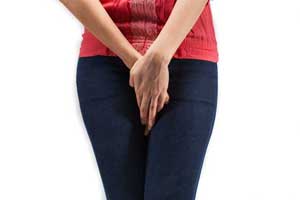




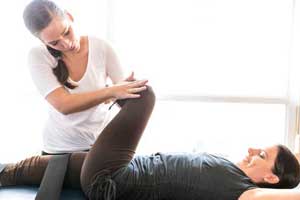


















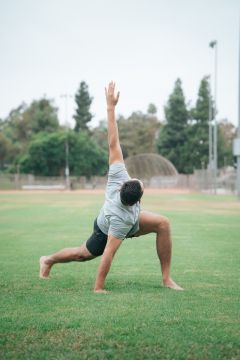



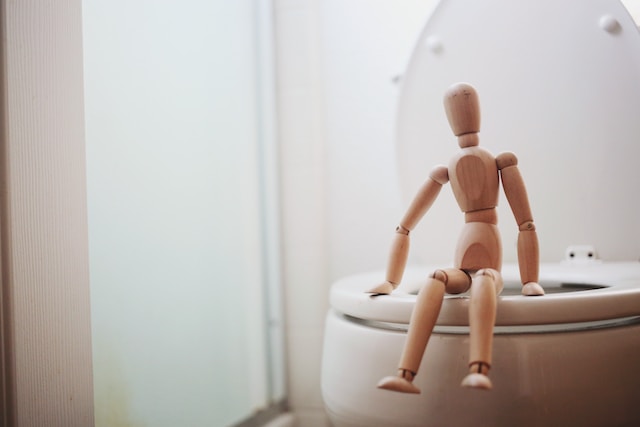






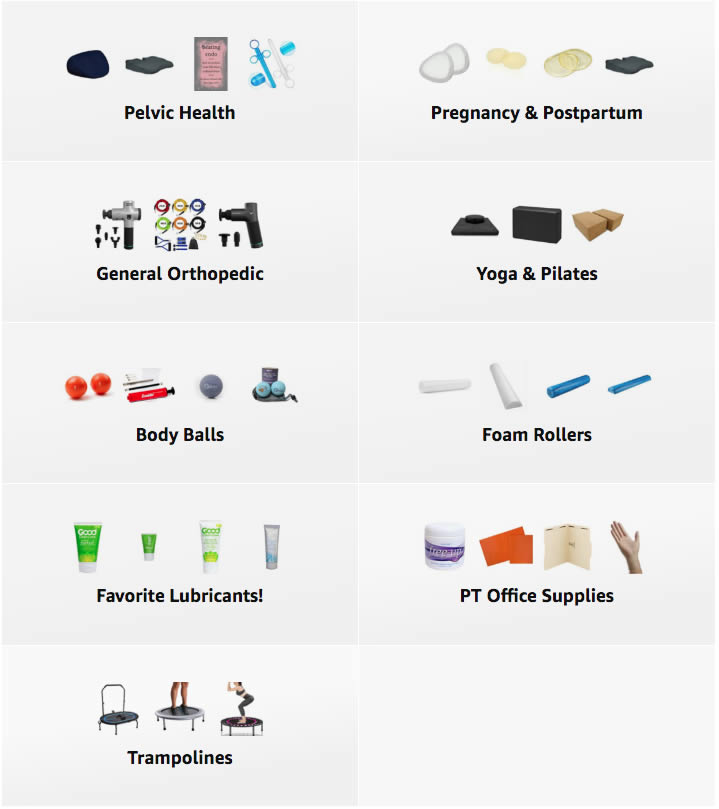 A Curated List of Excellent Items at Amazon
A Curated List of Excellent Items at Amazon


